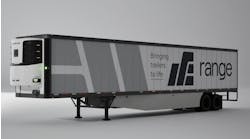C.R. England is one of a handful of commercial fleets deploying Platform Science’s Virtual Vehicle platform as the need for aftermarket in-vehicle hardware shifts in favor of a more flexible, open platform “natively” equipped on the vehicle.
The group also includes Schneider, Werner Enterprises, and Covenant logistics.
Virtual Vehicle, the premier open connected vehicle application platform, was developed in collaboration with Daimler Truck North America, Navistar, Paccar, and other leading OEMs, Platform Science explained. Virtual Vehicle enables fleets to access a marketplace of telematics, driver, and fleet management apps through factory-equipped native OEM vehicle architecture or through simple aftermarket hardware installations for non-compatible vehicles.
“The comprehensive product suite, powerful driver workflow solution, and easy migration path make Virtual Vehicle an ideal software-based telematics platform for our 4,000-plus truck fleet and opens the door for increased productivity and innovation that will benefit our drivers and customers,” CR England CEO Chad England said in a news release.
The platform places vehicles at the center of a dynamic tech hub, with real-time vehicle data, ease-of use, automation, sensor integration, and advanced safety features, as well as a developer platform for fleets and third parties. It’s turnkey software pre-installed by the OEM truck manufacturer, and managed remotely by the fleet operator and updated over-the-air as needed. Virtual Vehicle provides flexibility and choice for fleets.
“The era of aftermarket hardware is dead,” said Jake Fields, Platform Science co-founder and CTO. “We now have fleets enabling Virtual Vehicle over-the-air on the majority of their vehicles vs. performing a traditional telematics hardware install. They simply activate the vehicles, drivers hop in with a tablet and then drive away.
“This is a new approach to telematics enablement that saves time, reduces complexity and is unique to Virtual Vehicle.”



